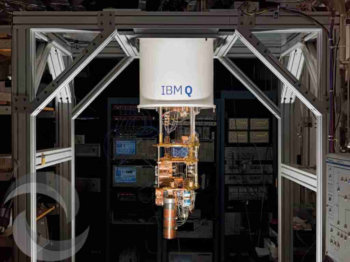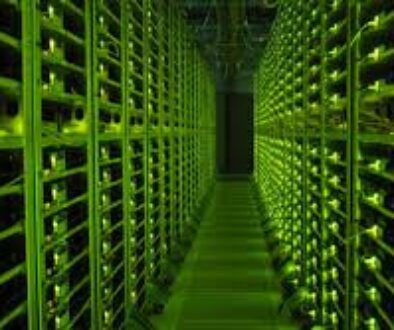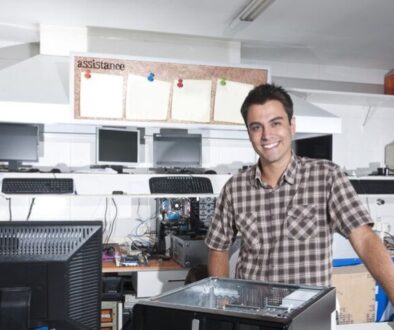IBM Q: Can Quantum Computers Replace Traditional Computers?
The evolution of computers has made us rank the quality of products by the nature of their sizes. Laptops, tablets, mobile phones- everything has shrunk the size of the chips, processors, circuit boards and other components.
The latest trend in computing that has created a buzz in the IT industry somewhat takes us back to the early days of clunky and huge computers that filled a room with a long network of wires.
But of course, with a modern twist. The Quantum computer developed by IBM changes the way data is stored and processed in a computer for better and faster solving of computational problems. The so called CPU looks similar in size and shape to a water immersion heater tank hanging in place with a frame of aluminum beams. There is a huge network of wires which connects the IBM Q with racks of off-the-shelf microwave oscillators.
Quantum computers bring the first important transformation in the process of computing since they were developed during the 1940s. It is still in its initial days, but IBM has already gotten some reputed clients in the industry to opt for their product.
It’s natural to be confused about quantum computing as it is truly complicated! Here’s a breakdown of information that will hopefully make things more clear:
What is a Quantum Computer?
The IBM Q is a result of the work of scientists such as Albert Einstein and Max Planck, based on the laws of quantum theory. It has to do with atoms and subatomic particles and their behavior which mimics sound waves. The movement of the quantum objects instead of being restricted is spread out and fixated to any fixed value. It was found that they could turn up to produce mixed values rather than being limited to single and fixed values. This condition has been called superposition and is the whole inspiration for quantum computers developed by IBM.
How does the IBM Quantum Computer Work?
Quantum computers harness the unique ability of the subatomic particles to occur in multiple states at any given time. The behavior pattern of the miniscule particles makes it possible to perform operations more quickly and energy efficiently than traditional computers.
A classical computer stores information in the form of bits. Bits can be either in states of 1 or 0. But quantum computers ‘qubits’ or quantum bits in place of the binary bits can store information as 1 and 0 at the same time and open up a lot more possibilities.
Imagine a scenario- You can add a transistor as a bit to the computer processor which enables you to encode one additional piece of binary information. But just by creating a joint superposition (entangled state) with a cluster of qubits, the encoding capacity can be doubled through each qubit.
So when you finally work to 300 qubit instead of billions of traditional bits densely ranked in processor, you’ve already gained 2^300 options!
Likewise, a single can store both 1 and 0, which are two states of information. 2 qubits will accommodate four states while 3 qubits can store eight states, 4 qubits can hold sixteen states…and it goes on!
The Coming of the IBM Q
Though quantum computers are being considered a thing of the future and need of the moment, it is indeed difficult to build one. The main problem lies in sustaining and maintaining the consistent states of the qubits. Processes involved in superposition and entanglement are complex and often disrupted.
The atomic movements also cause a huge amount of heat which must be cooled properly for them to be coherently entangled. This is also the reason the IBM Q is so bulky, to accommodate the cooling solution.
Another problem is the delicate nature of the entanglement which made it possible to develop quantum computers utilizing limited qubits. If one tries to cross the limits, the coherency is lost within a short time.
But IBM has led the way and now is out in the market with its commercial quantum computers. Just back in November 2017 they announced the release of the IBM Q systems to online customers. The system is equipped with a 20 qubit processor and handles high-fidelity quantum operations quite efficiently. It also established a record breaking coherence time of 90 microseconds.
The system has taken three generations of development after they were introduced for the first time in 2016 to come up with the suitable hardware. Before the 20 qubit one, IBM had made a 5 and 16 qubit system which the public could access through IBM Q experience.
The constant research, engineering and development by IBM have led to the development of the IBM Q with 50 qubit processor. It is still a prototype but with similar performance metrics and expected to be available by 2018.
The Future of IBM Q Quantum Computer
The road for IBM seems to be prospective as they have been able to rope in top clients from all over the world to use their quantum computers. Leading names include Samsung, Honda, Barclays, JP Morgan Chase, Daimler, and others.
Samsung will use the technology to improve manufacturing while Daimler will carry out quantum chemistry calculations for battery development and research to create optimum routes for their fleet. JP Morgan’s quantum computer will have financial uses analyzing risks, trading patterns, and asset pricing.
Quantum computers may turn out to be one of the major contributors of revenue for IBM with global players ready to accompany them on the quantum journey.
IBM has a series of changes and upgrades planned for their Q series all through the next year. It is still in the early days and there is a long way to go. IBM wants to introduce quantum systems which can be scaled as per enterprise needs, have more advanced capabilities, and the ability to carry out modern day applications.





